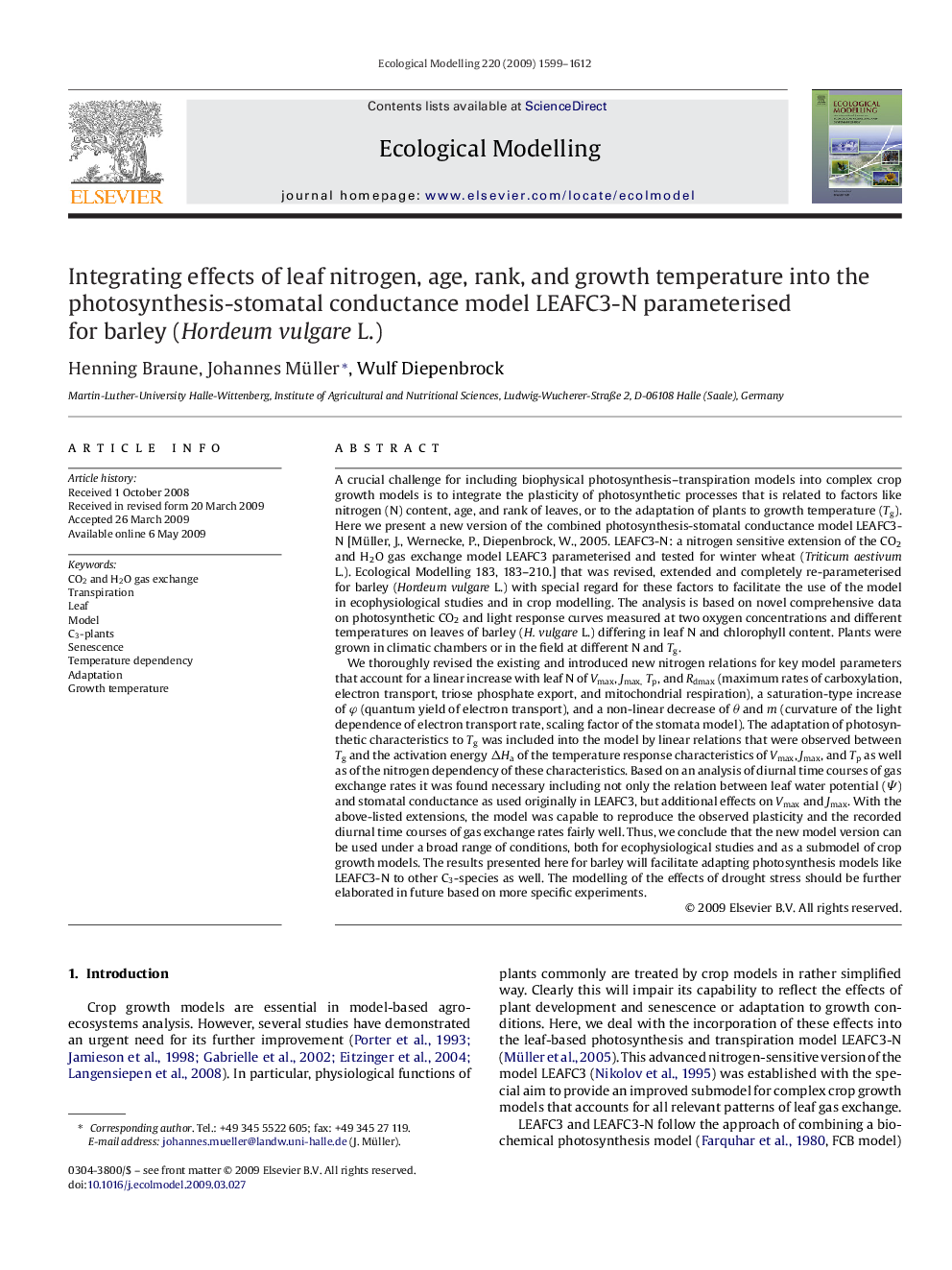| Article ID | Journal | Published Year | Pages | File Type |
|---|---|---|---|---|
| 4377739 | Ecological Modelling | 2009 | 14 Pages |
A crucial challenge for including biophysical photosynthesis–transpiration models into complex crop growth models is to integrate the plasticity of photosynthetic processes that is related to factors like nitrogen (N) content, age, and rank of leaves, or to the adaptation of plants to growth temperature (Tg). Here we present a new version of the combined photosynthesis-stomatal conductance model LEAFC3-N [Müller, J., Wernecke, P., Diepenbrock, W., 2005. LEAFC3-N: a nitrogen sensitive extension of the CO2 and H2O gas exchange model LEAFC3 parameterised and tested for winter wheat (Triticum aestivum L.). Ecological Modelling 183, 183–210.] that was revised, extended and completely re-parameterised for barley (Hordeum vulgare L.) with special regard for these factors to facilitate the use of the model in ecophysiological studies and in crop modelling. The analysis is based on novel comprehensive data on photosynthetic CO2 and light response curves measured at two oxygen concentrations and different temperatures on leaves of barley (H. vulgare L.) differing in leaf N and chlorophyll content. Plants were grown in climatic chambers or in the field at different N and Tg.We thoroughly revised the existing and introduced new nitrogen relations for key model parameters that account for a linear increase with leaf N of Vmax, Jmax,Tp, and Rdmax (maximum rates of carboxylation, electron transport, triose phosphate export, and mitochondrial respiration), a saturation-type increase of φ (quantum yield of electron transport), and a non-linear decrease of θ and m (curvature of the light dependence of electron transport rate, scaling factor of the stomata model). The adaptation of photosynthetic characteristics to Tg was included into the model by linear relations that were observed between Tg and the activation energy ΔHa of the temperature response characteristics of Vmax, Jmax, and Tp as well as of the nitrogen dependency of these characteristics. Based on an analysis of diurnal time courses of gas exchange rates it was found necessary including not only the relation between leaf water potential (Ψ) and stomatal conductance as used originally in LEAFC3, but additional effects on Vmax and Jmax. With the above-listed extensions, the model was capable to reproduce the observed plasticity and the recorded diurnal time courses of gas exchange rates fairly well. Thus, we conclude that the new model version can be used under a broad range of conditions, both for ecophysiological studies and as a submodel of crop growth models. The results presented here for barley will facilitate adapting photosynthesis models like LEAFC3-N to other C3-species as well. The modelling of the effects of drought stress should be further elaborated in future based on more specific experiments.
